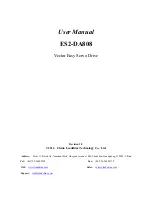
214
Operating Instructions ACU
12/16
The behavior of the technology controller corresponds to a PID controller with portions
Proportional component
Amplification
444
Integral component
Integral Time
445
Differential component
Derivative Time
618
The sign of the amplification defines the control direction, i.e. if the actual value increases and the
sign of the amplification is positive, the output frequency is reduces (e.g. pressure control). With a
rising actual value and negative sign of the amplification, the output frequency is increased (e.g. in
temperature control systems, refrigerating machines, condensers).
The integral component can be used in order to reduce the stationary error (deviation between
actual value and setpoint) over time. If the integral component is too dynamic
1)
, the system may
become unstable and vibrate. If the integral component is too passive
2)
, the stationary error is not
compensated sufficiently.
For this reason, the integral portion must be adjusted plant-specifically.
1)
Dynamic behavior: Quick compensation of deviations.
2)
Passive behavior: Slow compensation of deviations.
By default, the differential component is set to
Derivative Time
618
= 0 ms, i.e. it is deactivated.
If the compensation behavior of the PI controller (or P controller) is too slow, quicker compensation
can be reached by activating and adjusting the differential component (
Derivative Time
618
).
However, if the differential component is activated, the system has a higher tendency toward
vibration. For this reason, the differential component should be activated and changed carefully.
Bonfiglioli Vectron MDS GmbH recommends setting the times
Integral Time
445
for the integral
component and
Derivative Time
618
for the differential component to a value which exceeds the
sampling time which is 2 ms in the case of the ACU device.
Parameter
Max. P-Component
442
limits the frequency change at the controller output. This
prevents vibrations of the system if steep acceleration ramps were selected.
Parameter
Hysteresis
443
enables suppressing changes of the integral component outside of a
certain range (hysteresis range). This enables a more passive behavior of the technology controller.
This may be useful if the stator frequency cannot follow the reference frequency of the technology
controller. The
Hysteresis
443
is referred, as a percentage, to the
Rated Frequency
375
, i.e.
typically 50 Hz.
The hysteresis is a limiting factor at the input of the integral component. High differences between
the current stator frequency and the technology controller output are limited in this way, excessive
integrating of the integral component is prevented.
443
375
Hysteresis
frequency
Rated
f
f
stator
tech
The deviation
between the technology controller reference
frequency (f
tech
) and the stator frequency (f
stator
) is to large.
The integrator is stopped.
443
375
Hysteresis
frequenz
Rated
f
f
stator
tech
The stator frequency (f
stator
) can follow the technology
controller reference frequency (f
tech
) sufficiently. The
deviation
is small enough.
Содержание active cube 201
Страница 1: ...ACTIVE CUBE Operating Instructions Frequency inverter 230 V 400 V 0 25 kW 132 kW...
Страница 2: ......
Страница 45: ...12 16 Operating Instructions ACU 45...
Страница 181: ...12 16 Operating Instructions ACU 181...
Страница 284: ......
















































